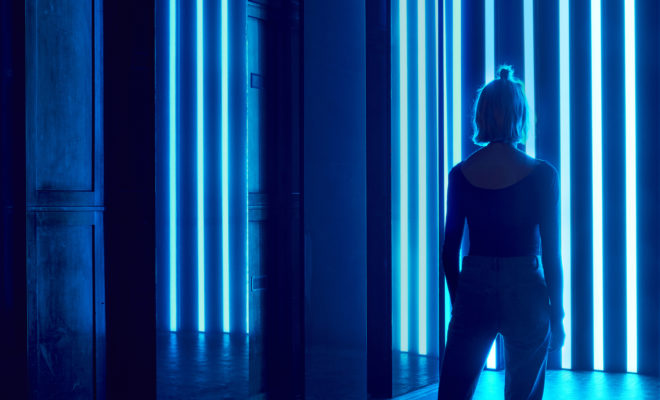 Reflection Room, 2017. Photo by Mark Cocksedge.
Reflection Room, 2017. Photo by Mark Cocksedge.
Design
Highlights from this year’s London Design Festival
WHEN IT FIRST DEBUTED IN 2003, London Design Festival was a small affair, with just thirty-two participating venues, but this year marked its 15th anniversary and has since shown dramatic growth, now hosting over 450 events throughout the city. From September 16 to the 24, a number of institutions held exhibitions for the annual event, showcasing the city’s most creative minds in design. The festival now runs alongside other creative celebrations in the city, including Frieze Art Fair and London Fashion Week, and is considered to be one of centerpieces of the season. Here are some of the standouts that caught our eye.
For the Festival, textile designer Camille Walala created Villa Walala, a massive inflatable structure. The installation covered almost all of Exchange Square in Broadgate, a large office and retail space on top of the former Broad Street station. As a child, Walala’s parents introduced her to the Memphis Group and African art, which have continued to influence her designs. Walala’s vibrant bouncy-house resembled stacked building blocks and was wrapped in her signature “tribal pop” style with bold colors and geometric shapes that contrasted with the stark surrounding campus environment it occupied.
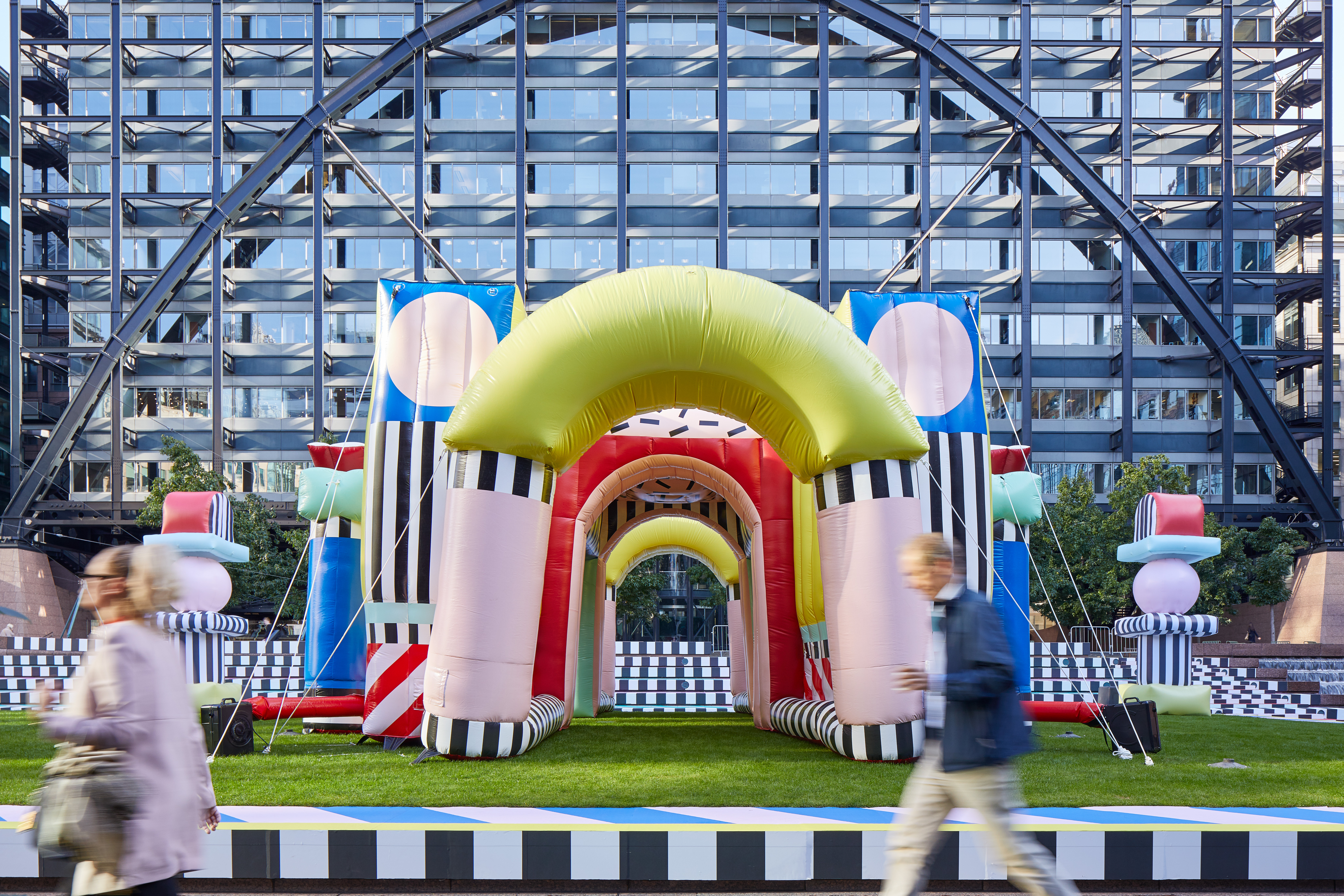
Villa Walala, 2017. Photo by Andy Stagg.
While the Victoria and Albert Museum has been involved with the festival in the past, this year was the first time the institution brought the festivities into the institution’s Prince Consort Gallery. Flynn Talbot transformed the space with his Reflection Room, an immersive colored light experience. An abundance of orange and blue LEDs covered the gallery and accentuated the vaulted ceiling, while the black reflective Barrisol panels appeared to extend the 115-foot-long room. No matter where they stood in the room, visitors were illuminated in a mixture of colors, adding to the brilliance of the reflections.
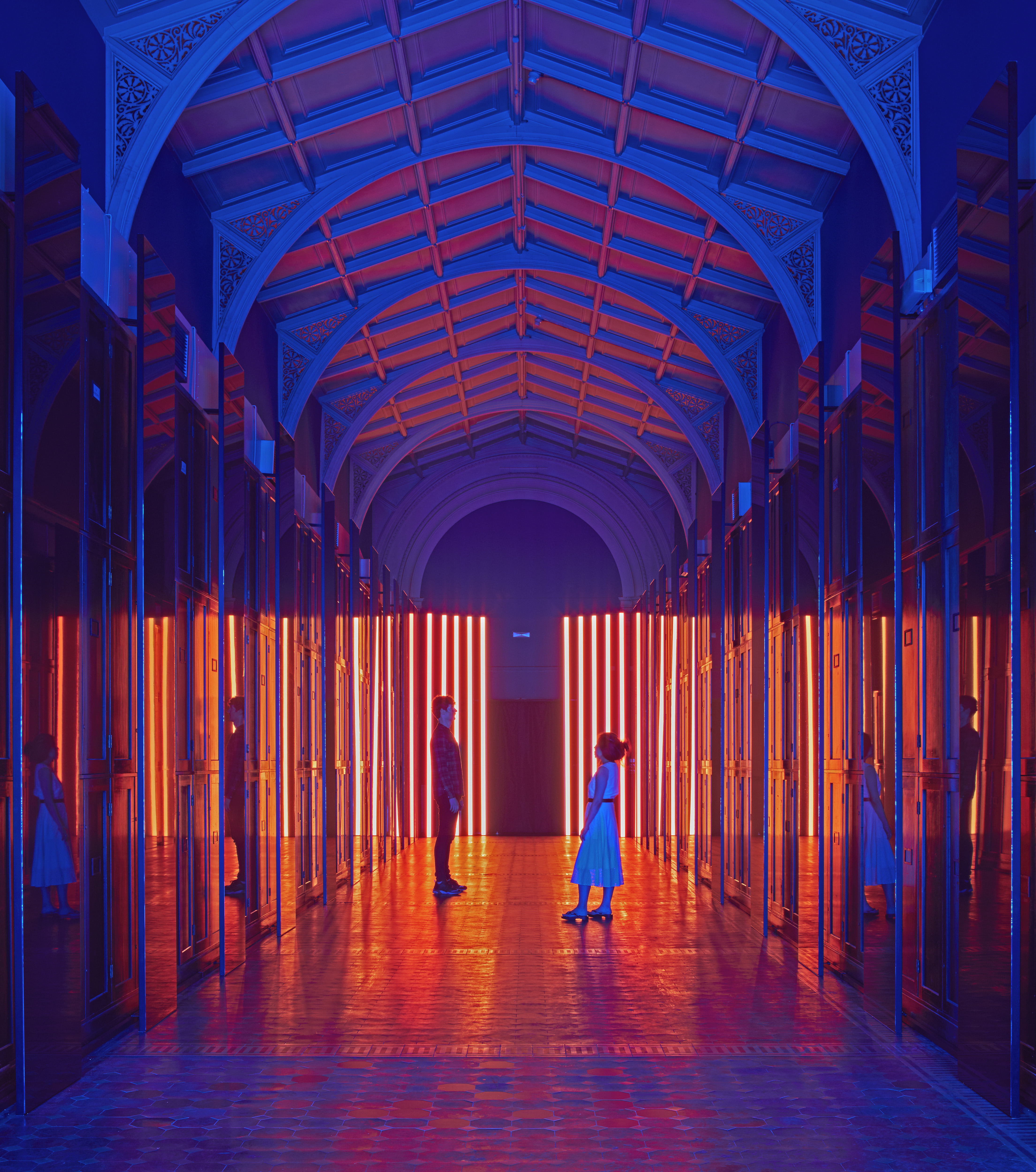
Reflection Room, 2017. Photo by Edmund Sumner.
Exhale: Bionic Chandelier was specially commissioned by the Victoria and Albert Museum. The exhibit was created for the festival by Julian Melchiorri, the CEO of Arborea, a biochemical technology company. Arborea is most famous for its invention of bionic leaves, which remove carbon dioxide and air pollutants from both high and low pressure gases. The chandelier is made up of seventy “petals,” each containing green algae. These microorganisms absorb the carbon dioxide in the air and replace it with oxygen. This living, breathing chandelier is the first of its kind.
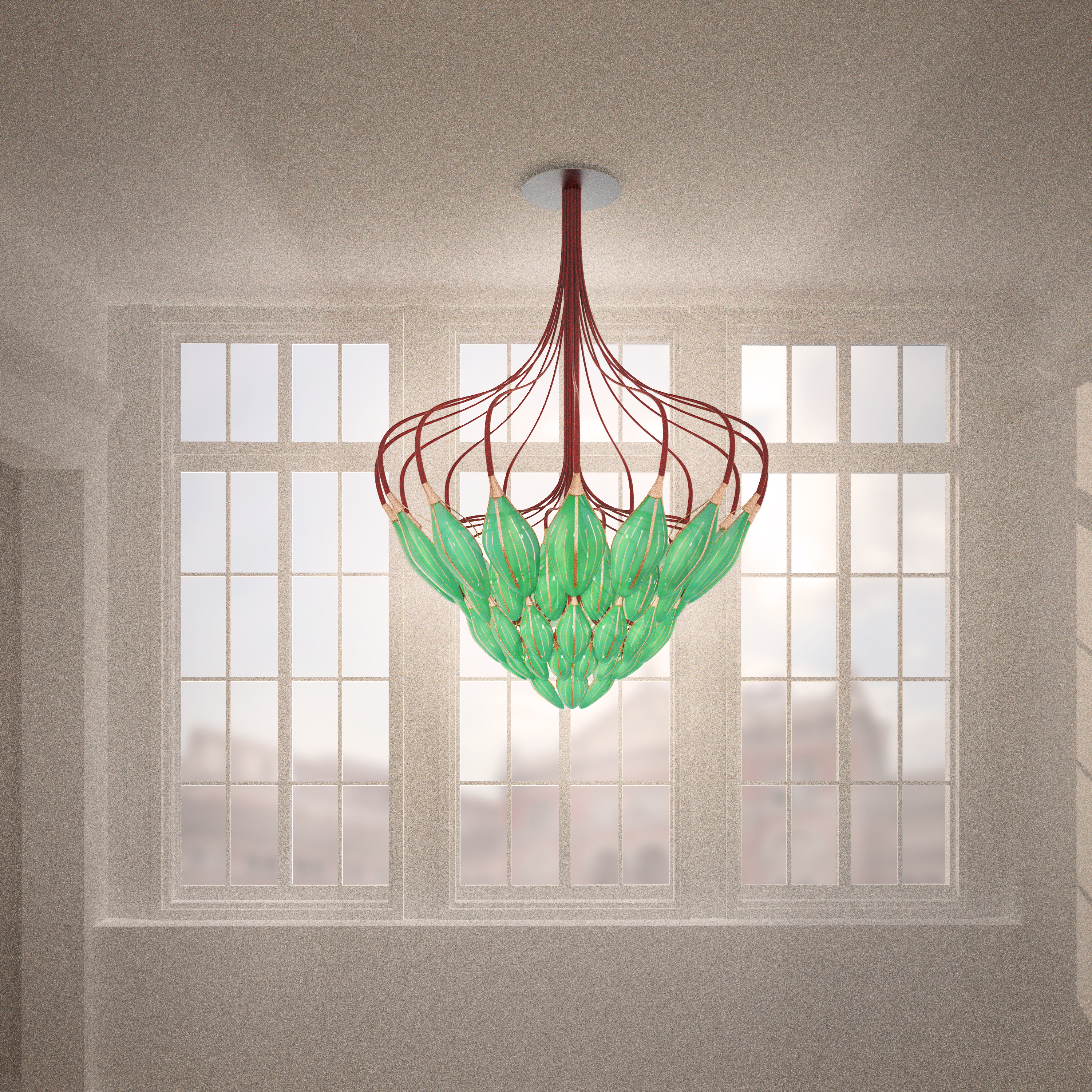
Rendering of Arborea Chandelier, 2017.
A group exhibition titled Design Frontiers took over Somerset House during the festival. Thirty designers showcased their work throughout the arts center, displaying the broad reach of design.
As part of Design Frontiers, Kvadrat challenged nineteen artists and designers around the world to create pieces with their signature textile, Canvas, newly released in an updated color palette by Italian colorist Giulio Ridolfo. Among those involved in the My Canvas installation were Chen Chen and Kai Williams, with their piece Lion Dance Costume, inspired by the idea of the traditional Chinese lion dance, and Christien Meindertsma, with his piece Pigeon Service, a continuation of his previous work about the use of homing pigeons during World War I.
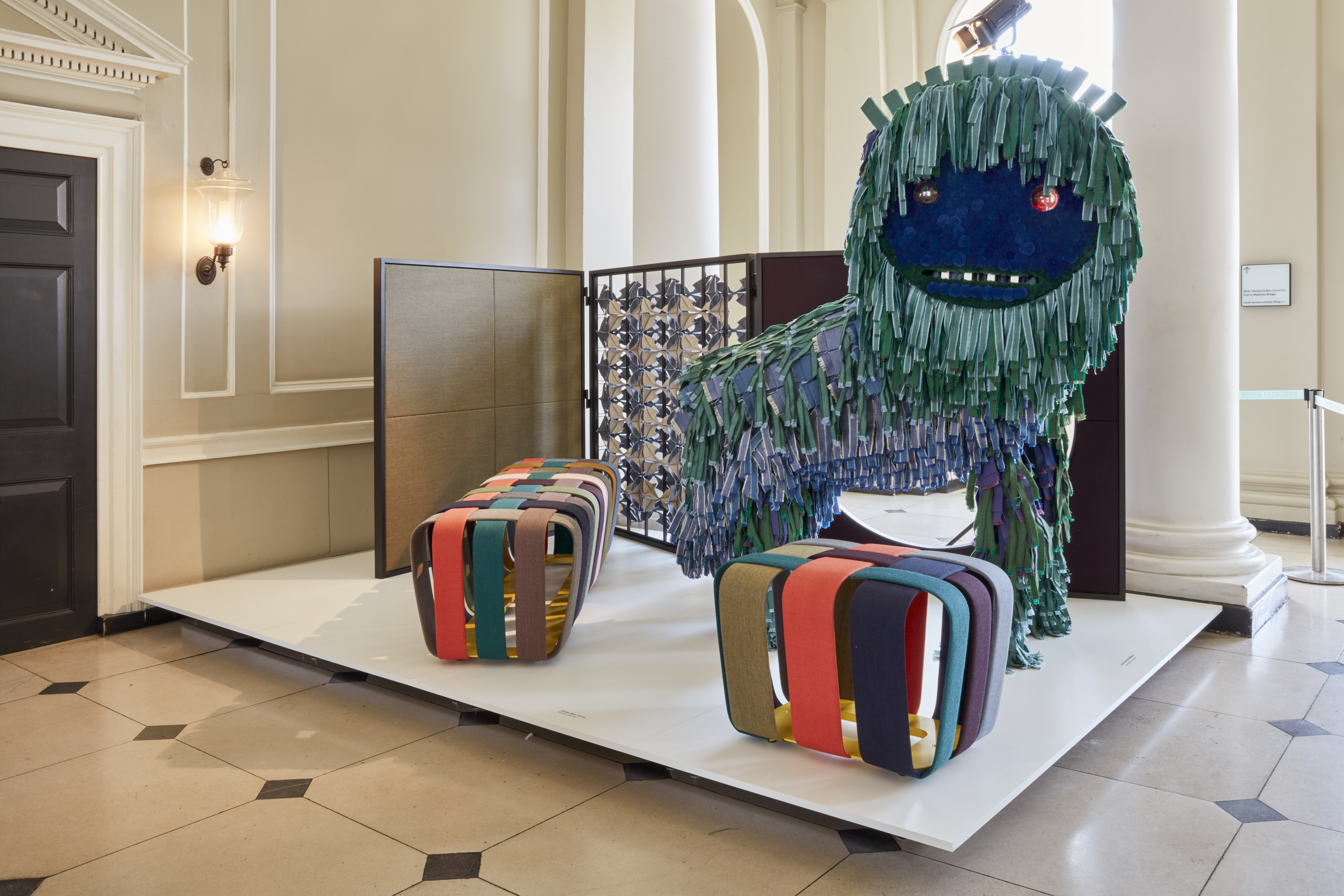
Front: Woven Bench, 2017, by Atelier Max Lipsey; Center: Lion Dance Costume, 2017, by Chen and Williams; Back: Blossom in Between, 2017, by Kate Chung. Photo by Ed Reeve.
Another staple from Design Frontiers was the collection Luminous Reflections by Tord Boontje for Swarovski. Boontje has been collaborating with Swarovski for fifteen years and has designed custom crystal shapes for the new chandeliers. These frosted crystals create a soft light effect, like that of a “snowy landscape” said Boonjte. The collection includes four organically shaped pieces, inspired by nature and covered in glittering Swarovski crystals.
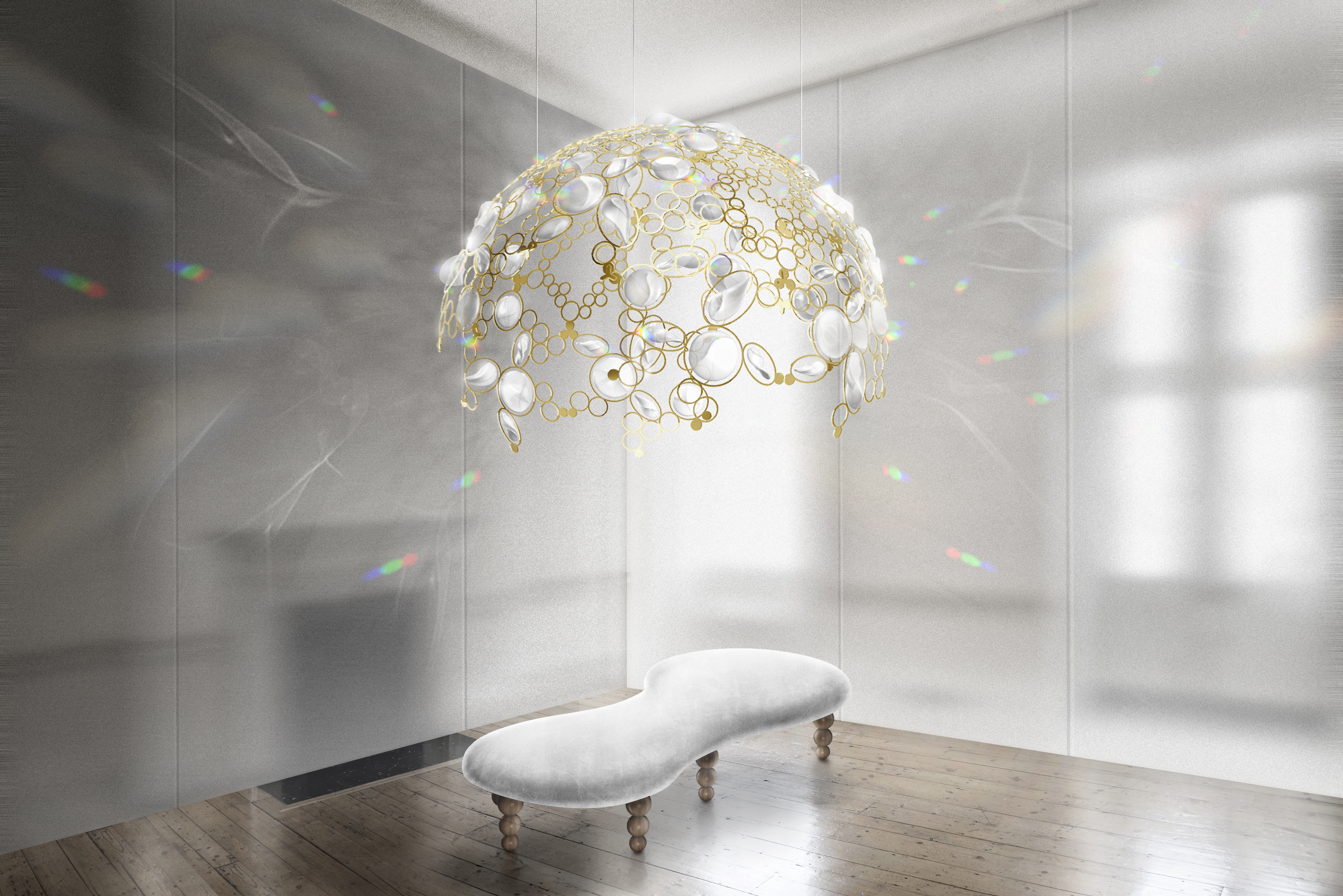
Lustrous Aura, 2017. Photo by Ed Reeve.
Materialise, a collaboration between Big Studio and Pentland, also took part in Design Frontiers this year. Pentland is the company behind well-known brands like Hunter, Lacoste, and Speedo. For the exhibit, creative director Katie Greenyer took the most iconic pieces from these brands to showcase the front line of technology and modern design. Each piece was fitted into the walls of the Chapel Room at Somerset House, surrounded in a glowing white light, while the rest of the room was an electric shade of orange.
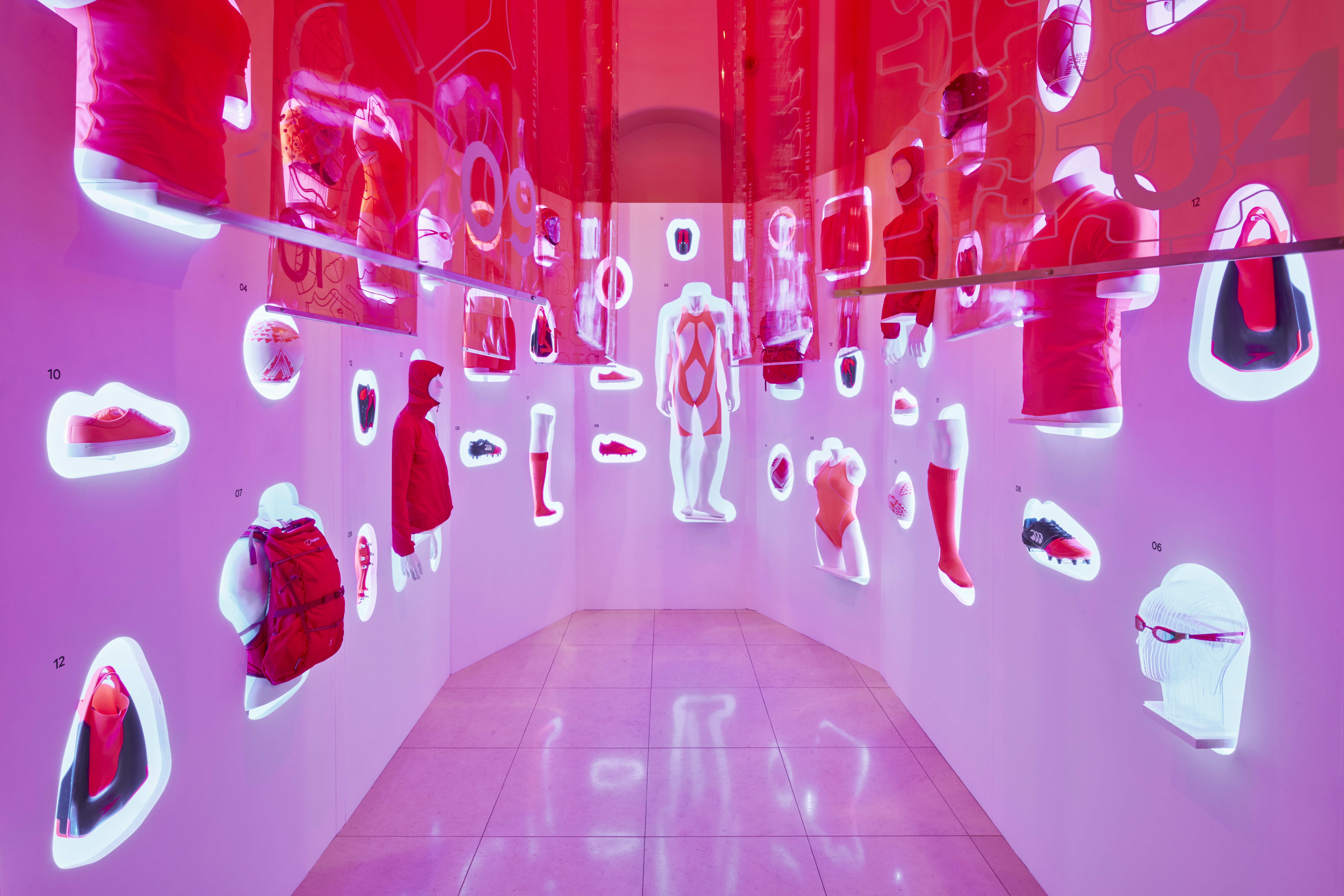
Materialise, 2017. Photo by Ed Reeve.
MINI LIVING collaborated with Sam Jacob Studio to create Urban Cabin, as a continuation of MINI’s research on the future of urban environments. They designed a micro-house to accommodate the needs of an urban resident, including ideas about the creative use of space, while Sam Jacob Studio added distinctive London characteristics. Jacob’s exterior design gives a nod to the city’s geometric facades and the interior plays up, what he calls, “Britain’s eccentricity.” In this bite-size dwelling, design from the past collides with design of the future.
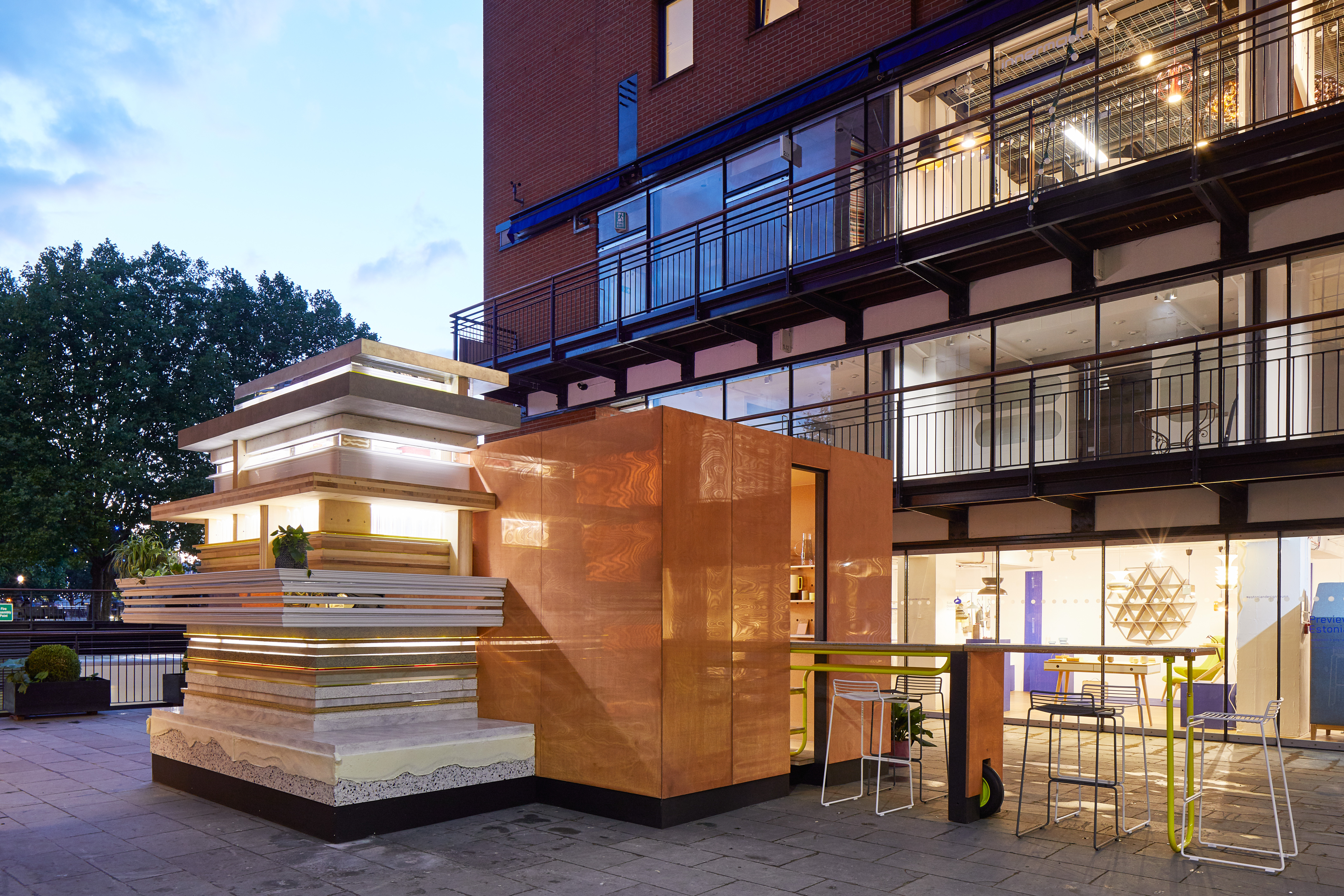
Urban Cabin, 2017. Photo by Andy Stagg.










